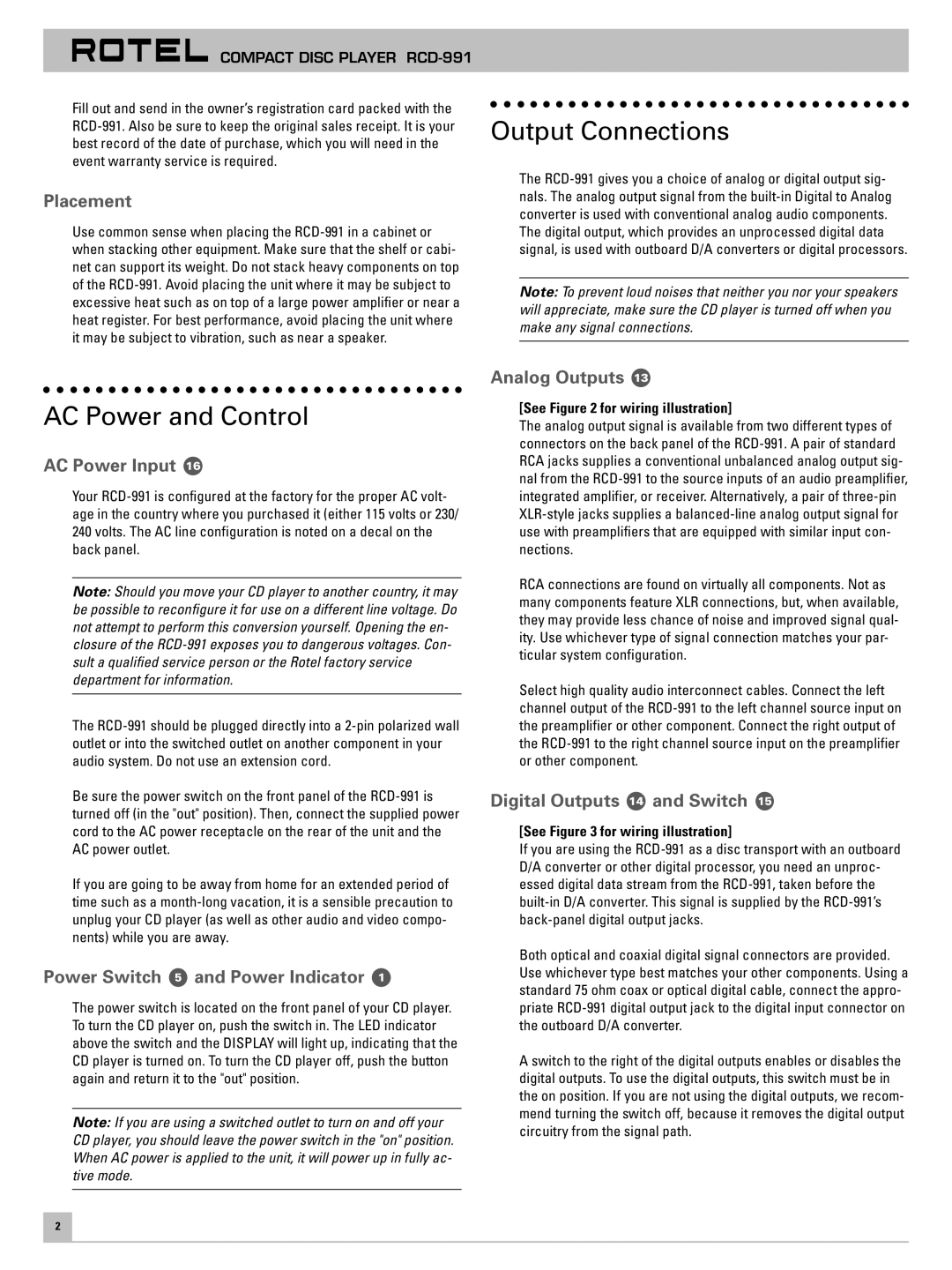
COMPACT DISC PLAYER
Fill out and send in the owner’s registration card packed with the
Placement
Use common sense when placing the
Output Connections
The
Note: To prevent loud noises that neither you nor your speakers will appreciate, make sure the CD player is turned off when you make any signal connections.
Analog Outputs 13
AC Power and Control
AC Power Input 16
Your
Note: Should you move your CD player to another country, it may be possible to reconfigure it for use on a different line voltage. Do not attempt to perform this conversion yourself. Opening the en- closure of the
The
Be sure the power switch on the front panel of the
If you are going to be away from home for an extended period of time such as a
Power Switch 5 and Power Indicator 1
The power switch is located on the front panel of your CD player. To turn the CD player on, push the switch in. The LED indicator above the switch and the DISPLAY will light up, indicating that the CD player is turned on. To turn the CD player off, push the button again and return it to the "out" position.
Note: If you are using a switched outlet to turn on and off your CD player, you should leave the power switch in the "on" position. When AC power is applied to the unit, it will power up in fully ac- tive mode.
2
[See Figure 2 for wiring illustration]
The analog output signal is available from two different types of connectors on the back panel of the
RCA connections are found on virtually all components. Not as many components feature XLR connections, but, when available, they may provide less chance of noise and improved signal qual- ity. Use whichever type of signal connection matches your par- ticular system configuration.
Select high quality audio interconnect cables. Connect the left channel output of the
Digital Outputs 14 and Switch 15
[See Figure 3 for wiring illustration]
If you are using the
Both optical and coaxial digital signal connectors are provided. Use whichever type best matches your other components. Using a standard 75 ohm coax or optical digital cable, connect the appro- priate
A switch to the right of the digital outputs enables or disables the digital outputs. To use the digital outputs, this switch must be in the on position. If you are not using the digital outputs, we recom- mend turning the switch off, because it removes the digital output circuitry from the signal path.
